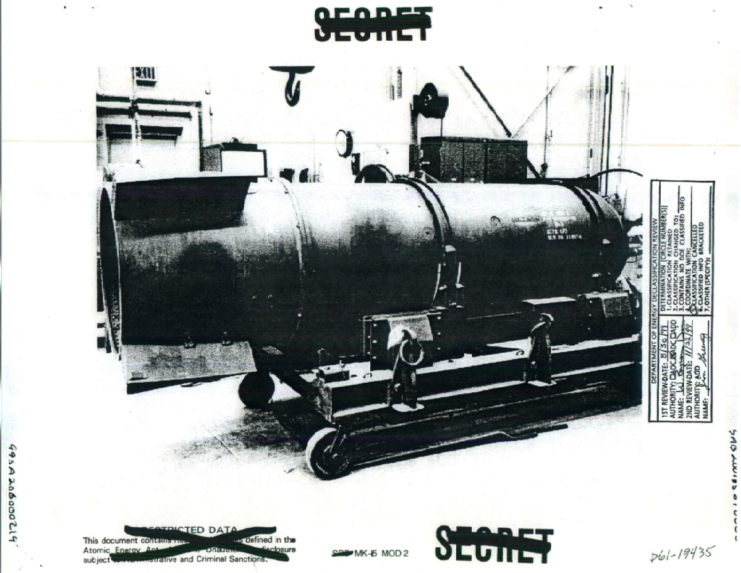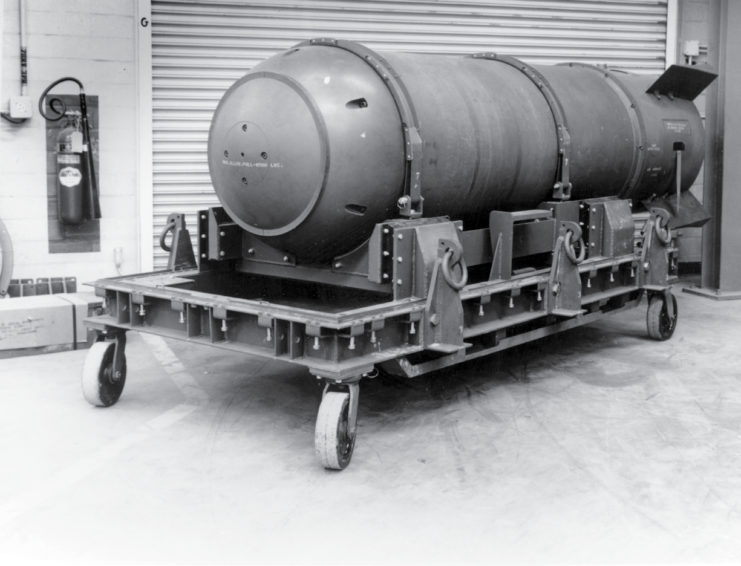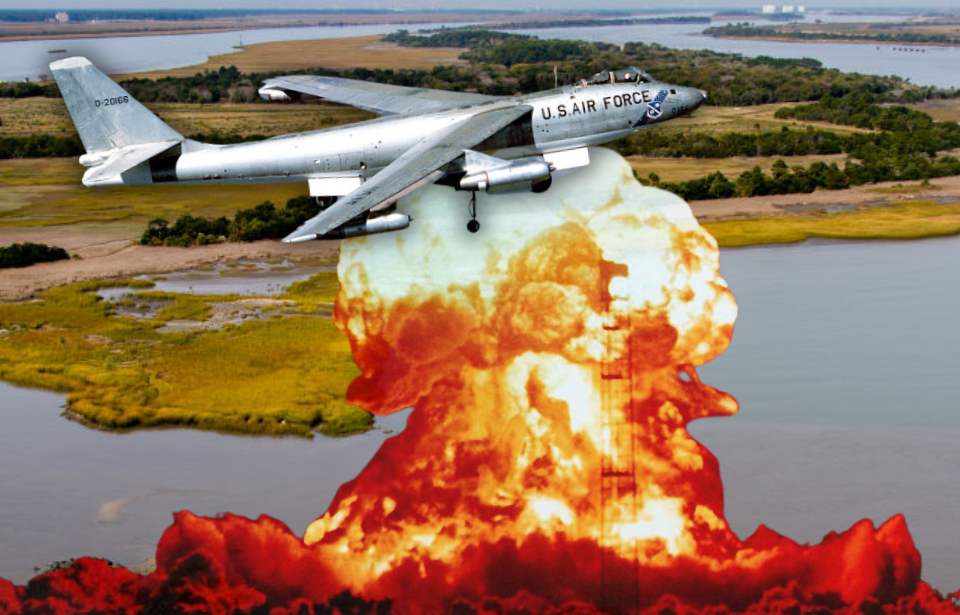Near the coast of Tybee Island, close to Savannah, Georgia, a Mark 15 nuclear bomb has rested on the ocean floor since it was accidentally dropped by the US Air Force in the 1950s. It remains submerged in Wassaw Sound, awaiting either recovery or possible detonation.
This continuing uncertainty is very concerning. Initial reports suggested that the bomb’s nuclear core had been removed, but documents suggest it may still be intact. As a result, the Mark 15 continues to pose a potential danger to nearby communities.
Mid-air collision over Tybee Island

On February 5, 1958, while performing a simulated combat mission exercise, a Boeing B-47 Stratojet was involved in a mid-air collision with a North American F-86 Sabre. The B-47, having taken off from Homestead Air Force Base, Florida, was carrying a two-man crew, as well as a 7,600-pound Mark 15 nuclear bomb.
The F-86’s pilot, Lt. Clarence Stewart, hadn’t seen the B-47 on his radar and descended directly on top of it. The crash between the two caused the left wing of the fighter jet to completely rip off, while the bomber’s fuel tanks suffered heavy damage. Stewart was able to eject before his aircraft crashed, while the pilot of the B-47, Lt. Col. Howard Richardson, sought the closest landing base. Despite the damages to the bomber, the B-47 remained airborne. After dropping 18,000 feet, Richardson regained control.
As for the nuclear bomb onboard the aircraft, he granted the crew’s request to jettison it, to prevent it from exploding during the emergency landing. The bomb was dropped from 7,200 feet, over the shores of Tybee Island. The pilot and crew reported no explosion upon it meeting the water, and they were able to successfully land the damaged B-47 at Hunter Army Airfield, Georgia.
For his actions, Richardson was awarded the Distinguished Flying Cross.
A search force was sent to find the bomb

The day following the collision, a search operation began to locate the missing bomb. Leading the mission was the US Air Force’s 2700th Explosive Ordnance Disposal Squadron, with support from 100 US Navy personnel. Their efforts concentrated on the waters surrounding Tybee Island, specifically Wassaw Sound. The team used handheld sonar devices and carried out extensive cable sweeps, with the search continuing for nearly 10 weeks.
Unfortunately, on April 16, the military announced that they had been unable to find the explosive.
In 2001, the Department of Energy conducted a hydrographic survey of Wassaw Sound, uncovering new clues about the potential location of the Mark 15. The survey indicated that the bomb could be buried under five to 15 feet of silt, providing the military with a more focused area for future searches.
Was the Mark 15 nuclear?

Ever since its disappearance, experts have argued over whether the weapon was nuclear or not. If it had a plutonium core, then it was a fully-functional nuclear weapon. If not, then the core was replaced with a dummy, making it non-nuclear, but still capable of producing a conventional explosion.
The Air Force assured the public that the Mark 15’s “nuclear capsule” was removed prior to the flight and fitted with a simulated 150-pound cap made of lead. Strategic Air Command documents reinforced this sentiment, explaining that test flights in February 1958 weren’t authorized to fly with nuclear capsules fitted into their bombs.
For a long time, this explanation was accepted. However, in 1994, a previously-classified document featuring the transcript from the 1966 Congressional testimony of then-Assistant Secretary of Defense W.J. Howard became unclassified, which contradicted what the Air Force had assured the public for years.
Speaking to the US Congressional Joint Committee on Atomic Energy, Howard confessed the Mark 15 was a “complete, fully functional bomb with a nuclear capsule,” containing a plutonium trigger. If Howard’s testimony is correct, then the bomb may still cause significant damage to the surrounding area, if detonated. The explosion would include a fireball reaching over a mile and thermal radiation detection as far as 10 miles in all directions.
Yet another search is launched

Armed with updated data, Air Force veteran Lt. Col. Derek Duke privately conducted a new search for the missing nuclear bomb in 2004. Alongside his team, they meticulously explored the Wassaw Sound area, using a Geiger counter to measure radiation levels in the water.
Their efforts revealed that radiation levels near the peak of Tybee Island were significantly elevated, about four times higher than normal, potentially indicating the presence of the Mark 15 if it was indeed nuclear. By pinpointing these areas of heightened radiation, they could narrow down and map a zone roughly the size of a football field.
However, later Air Force analysis of the site concluded that the increased radiation came from natural sources, particularly monazite deposits in the sand. Consequently, the exact location of the elusive Mark 15 remains unresolved.
Best to leave the nuclear bomb alone

The Air Force is content with leaving the bomb’s location a mystery, and officials have assured residents in the surrounding area that it poses no threat, so long as it’s left alone. An “intact explosive would pose a serious explosion hazard to personnel and the environment if disturbed by a recovery attempt,” they stated.
More from us: Mars Bluff Incident: The US Air Force Accidentally Dropped a Nuclear Bomb on South Carolina
New! Want to become a trivia master? Sign up for our War History Fact of the Day newsletter!
The next time you go diving near Tybee Island, keep an eye out for the 12-foot long, 7,600-pound Mark 15 nuclear bomb with the serial number 47782. If you spot it, leave the sleeping beast alone!
